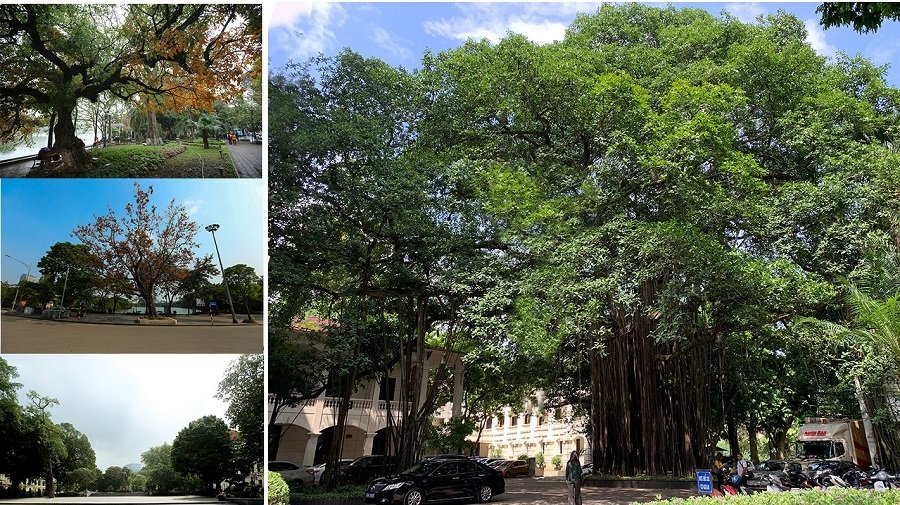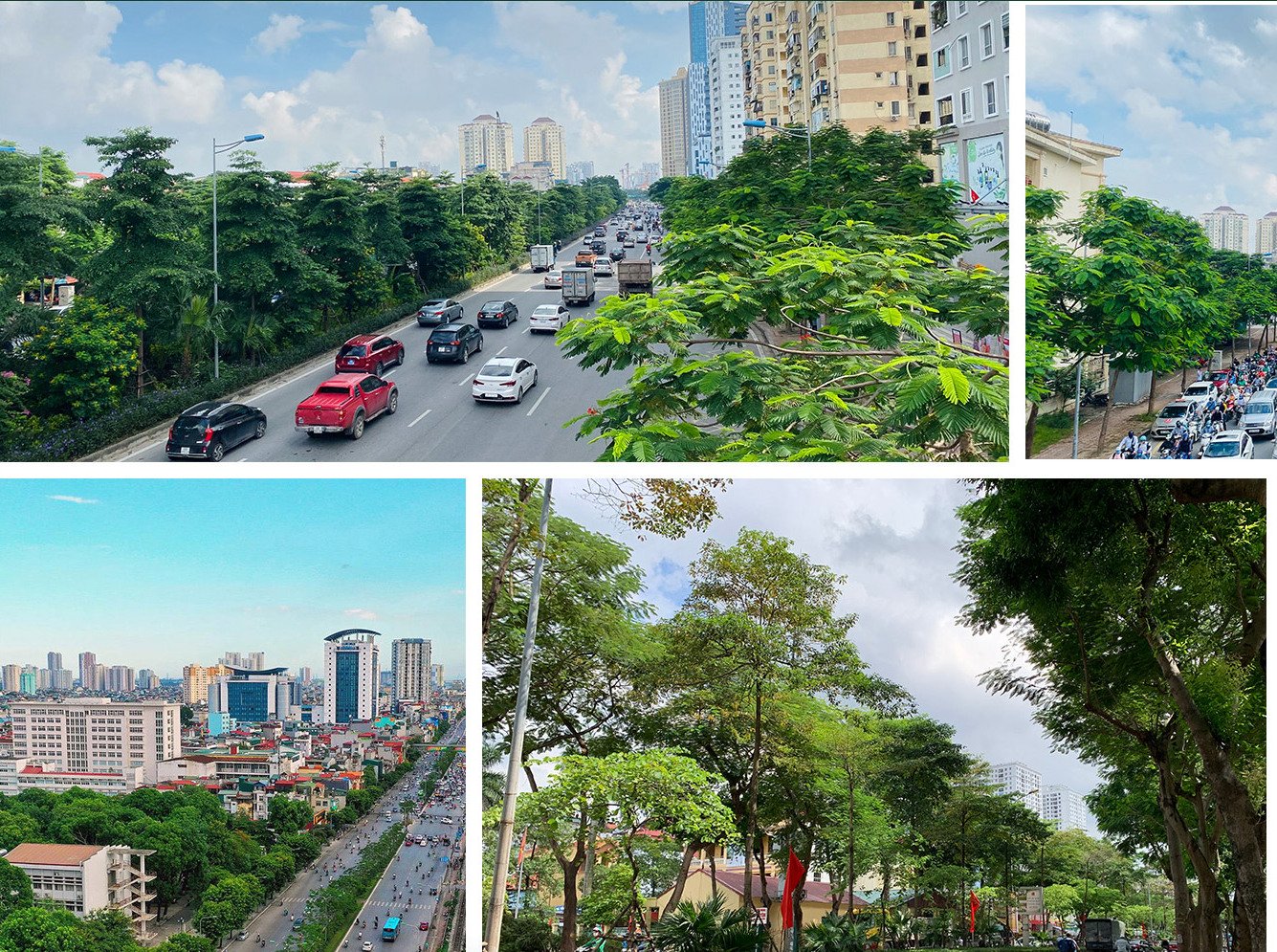In the eyes of some Hanoians, the city’s green trees partly contribute to the identity of the capital. Many ancient trees have lived for uncountable rainy and sunny seasons on Hanoi’s ancient streets, witnessing many historical ups and downs of the city.

Many ancient trees have lived for uncountable rainy and sunny seasons on Hanoi’s ancient streets.
Facts have shown that leafy spaces are crucial in any place, from big cities to rural villages. No matter where it is, green trees are always a part of a local person’s memory, from when they were born until they make the journey to the other world. However, there might be no other place like Hanoi where trees play such a crucial role in people’s lives.
Facts have shown that when a row of trees are chopped down or fall down due to storms or other reasons, it can create a feeling of loss and longing among Hanoians. When a tree is planted, it seems to be inanimate. But after months and years, when it grows up, it becomes a part of life of the city and its presence roots into the local people’s souls.
The relation between people and trees in Hanoi is rooted in a long time ago. Hanoians and Vietnamese people in general pay great attention to spiritual life. Temples, shrines, and pagodas are seen everywhere in the country. And those places are often nestled under the shadow of trees.
When passing Hang Gai street, one can see an old and big banyan tree. Its root is grown on one side of the street while its shadow can cover the other side. 102-year-old cultural researcher Huu Ngoc once said that when he was a little boy, he and his friends used to play around the tree. This proves that the tree is aged over a century. There are a lot of other ancient banyan trees around Hanoi’s Old Quarter.

Horse mango is another popular ancient tree planted around Hanoi’s places of worship as it can not only cast its shadow but its fruits can also be offerings for the gods.
For example, Voi Phuc Temple on Thuy Khue street was once home to nine horse mango trees aged over seven centuries. But only one of them still lives today. New horse mango trees were planted to replace the dead one, whose wood was used to produce wooden sculptures.
When the French came to Hanoi, the second generation of ancient trees was born. Mahogany trees were planted along Chu Van An and Ly Nam De streets while the pavements along Dinh Tien Hoang, Le Thanh Tong, Tran Hung Dai and Phan Dinh Phung streets are covered with rows of Indochinese dragon plum trees.
Then came the presence of hopea odorata trees in Lo Duc street, blackboard trees in Nguyen Du and Quan Thanh streets, and Indian-almond trees in Trang Thi street.
The trees quickly become “trademarks” of Hanoi’s streets. Now when ‘blackboard trees” are mentioned, people will think of Hanoi. The trees have also gone into songs, prose, poems, and paintings about Hanoi.
Hanoi now has many new types of tree, including bauhinia, flamboyant, freshwater mangrove, and even some imported species such as palm oil trees.
These newly-planted trees will become a part of Hanoi’s identity. This identity is not forged by a specific tree or street but the bond between the trees and the city’s people.